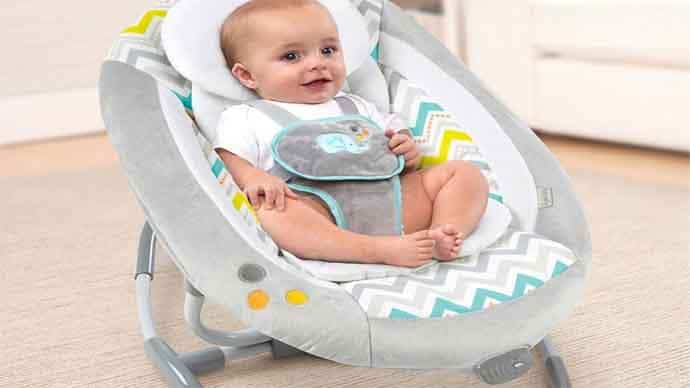As a new parent, the first few months of your baby’s life can be both exciting and overwhelming. Ensuring your little one gets enough sleep is crucial for their growth and development, and choosing the right sleep solution can make all the difference. Swaddle blankets and sleep sacks are popular options for newborns and infants, but which one is right for your baby?
Swaddle blankets are traditional blankets that wrap around your baby, mimicking the feeling of being in the womb. Sleep sacks, on the other hand, are wearable blankets that zip around your baby, providing a cozy and secure environment for them to sleep in. Both options have their benefits and drawbacks, and it’s important to weigh them carefully before making a decision.

Key Takeaways
- Swaddle blankets and sleep sacks are popular options for newborns and infants.
- Swaddle blankets mimic the feeling of being in the womb, while sleep sacks provide a cozy and secure environment.
- Both options have their benefits and drawbacks.
- It’s important to weigh the pros and cons before making a decision.
- Ultimately, the choice depends on your baby’s comfort and your personal preferences.
Understanding Swaddle Blankets
Swaddle blankets are a tried and tested method of helping your baby feel safe and snug while they sleep. Swaddling refers to the practice of wrapping a baby in a blanket to mimic the feeling of being in the womb.
Swaddle blankets come in various sizes and materials, such as muslin, cotton, and flannel, and serve different purposes. Some are designed for burping and breastfeeding, while others are meant for sleep.
Swaddling has many benefits, such as inducing sleep and reducing the risk of Sudden Infant Death Syndrome (SIDS). Additionally, swaddling can keep your baby warm and prevent them from scratching their face or startling themselves awake.
However, swaddle safety is crucial, and it’s important to follow proper guidelines to ensure your baby is safe. Your baby shouldn’t be swaddled too tightly, as it can restrict breathing and increase the risk of hip dysplasia. Always ensure that your baby is placed on their back when swaddled and never leave them unattended.
While swaddle blankets have their benefits, there are also some drawbacks to consider. Swaddling your baby for too long can restrict their movement, which is necessary for their physical development. Moreover, some babies may not like being swaddled and may struggle to break free, leading to frustration and discomfort.
“Swaddling your baby can lead to better sleep patterns and reduce the risk of sudden infant death syndrome (SIDS).”
Overall, swaddle blankets can be a useful tool when used correctly, but it’s important to be aware of their limitations and safety considerations.
Exploring Sleep Sacks
If you’re looking for an alternative to swaddle blankets, sleep sacks might be the perfect choice for your baby’s sleep routine. Sleep sacks are wearable blankets with openings for the arms and head, providing a cozy and safe sleeping environment for your little one.
Sleep sack safety is a top priority for parents, and for good reason. Sleep sacks are designed to keep your baby warm without the need for any extra blankets, reducing the risk of suffocation or SIDS. The American Academy of Pediatrics recommends the use of a wearable blanket like a sleep sack for safe sleeping.
One of the benefits of sleep sacks is their convenience. Unlike swaddle blankets, sleep sacks can be zipped up quickly and easily, making late-night diaper changes a breeze. They are also less likely to loosen or come undone as your baby moves around during sleep.
However, there are also some drawbacks to consider. Some babies may not like the feeling of being confined in a sleep sack and may prefer the freedom of movement provided by swaddle blankets. Additionally, sleep sacks come in different sizes, so you may need to purchase multiple sleep sacks as your baby grows.
| Sleep Sacks | Swaddle Blankets | |
|---|---|---|
| Design | Sleeveless wearable blankets | Wrapping with blankets |
| Safety | Reduced risk of suffocation or SIDS | Poses risks if not wrapped properly |
| Convenience | Quick and easy to put on and take off | Takes time to wrap properly |
| Comfort | May not suit all babies | Can be adjusted to suit baby’s preferred position |
It’s important to note that every baby is different, and what works for one may not work for another. It’s essential to consider your baby’s comfort and safety when choosing between swaddle blankets and sleep sacks.
If you’re considering transitioning from swaddle blankets to sleep sacks, it’s best to do so gradually. Start by leaving one arm out of the swaddle and using a sleep sack for the other arm. After a few nights, leave both arms out of the swaddle and use the sleep sack as a blanket. This gradual shift can help your baby adjust to the new sleep routine without causing too much disruption.
Overall, sleep sacks are a great option for parents who want a safe and convenient sleep solution for their babies. With the right sleep sack, your baby is sure to have restful nights of sleep, ensuring a happy and healthy start to life.
Comparing Wrapping and Zipping
When it comes to swaddling your baby, you have two main options: swaddle blankets and sleep sacks. Swaddle blankets involve wrapping your baby snugly, while sleep sacks are zipped up around your baby. Both methods have their advantages and disadvantages, so let’s take a closer look at each.
Swaddle Blankets
Swaddle blankets are a traditional method of wrapping your baby to provide a secure and cozy environment. They come in different materials, such as cotton or muslin, and sizes, allowing you to choose the one that suits your baby’s needs and your preferences. Using a swaddle blanket can help calm your baby and prevent the startle reflex that often wakes them up.
However, swaddling with a blanket can be a bit tricky, especially for new parents. Ensuring that the blanket is tight enough to keep your baby snug but not too tight to restrict their movements requires practice and patience. Moreover, if the blanket becomes loose during the night, it can increase the risk of suffocation or SIDS (Sudden Infant Death Syndrome).
Sleep Sacks
Sleep sacks are another option for keeping your baby cozy and secure. They come in various designs and materials and are easy to use. You can simply zip your baby into the sleep sack, and they will be ready for bed. Sleep sacks provide the same benefits of swaddling, such as calming your baby and preventing the startle reflex, without the need for swaddling skills.
However, sleep sacks might not be as snug as swaddle blankets, and some babies might not like the feeling of being so enclosed. Additionally, sleep sacks come in different sizes, and it’s essential to choose the right size for your baby to avoid any safety risks.
| Swaddle Blankets | Sleep Sacks | |
|---|---|---|
| Comfort | Snug and warm | Less snug than swaddle blankets |
| Safety | Risk of suffocation if the blanket is too loose or restrictive | Choose the right size to avoid safety concerns |
| Convenience | Requires practice and patience | Easy to use, no need for swaddling skills |
As you can see, both swaddle blankets and sleep sacks have their advantages and disadvantages. The choice between the two depends on your personal preferences and your baby’s comfort. Some parents prefer to use both methods, depending on the situation and their baby’s mood.

Transitioning from Swaddle to Sleep Sack
Transitioning from swaddle blankets to sleep sacks is an important milestone for both you and your baby. While it may seem daunting, the process can be made easier with the right techniques and mindset. Here are some tips to help you through the transition:
- Start with short periods of time: Begin the transition by allowing your baby to sleep in a sleep sack for short periods of time during naps. This can help them adjust gradually to the new sleeping arrangement without disrupting their entire sleep routine.
- Choose the right sleep sack: Look for a sleep sack that is designed for the transition period, with a snug fit around the arms and chest, but with more room for leg movement. This helps to reduce the startle reflex while allowing your baby to move around more freely.
- Gradually loosen the swaddle: If your baby is used to being tightly wrapped in a swaddle, try gradually loosening the swaddle as you introduce the sleep sack. This can help them get used to the sensation of having more freedom of movement.
- Watch for signs of discomfort: As you make the transition, keep an eye out for any signs of discomfort or restlessness in your baby. If they seem agitated or have trouble sleeping, it may be a sign that they need more time to adjust to the new sleeping arrangement.
Remember, every baby is different, and there’s no one-size-fits-all approach to transitioning from swaddle blankets to sleep sacks. It’s important to pay attention to your baby’s cues and adjust your approach accordingly.
By taking your time, using a gradual approach, and choosing the right sleep sack for your baby’s needs, you can make the transition a smooth and stress-free process for everyone involved.

Conclusion
Now that we’ve explored the differences between Swaddle Blankets vs. Sleep Sacks, it’s time for you to make a decision that works best for you and your baby. Keep in mind that your baby’s comfort and safety should always come first.
Tips for Choosing between Swaddle Blankets vs. Sleep Sacks
When deciding between swaddle blankets and sleep sacks, consider the wrapping versus zipping method, as well as the level of safety and convenience each option provides. Swaddle blankets can provide a traditional, snug feel, while sleep sacks can offer the convenience of zipping your baby in for quick changes and less disturbance to their sleep.
It’s important to also consider your baby’s age and developmental stage. As your baby grows, they may become more mobile, and a sleep sack may be a safer option to prevent them from rolling onto their stomach while sleeping.
Tips for Transitioning from Swaddle Blankets to Sleep Sacks
When transitioning from swaddle blankets to sleep sacks, it’s important to do it gradually to avoid disrupting your baby’s sleep routine. Begin by leaving one arm out of the swaddle for a few nights, then both arms out, and eventually switch to a sleep sack.
If your baby is having trouble adjusting, consider using a transitional swaddle that allows their arms to be free while still providing the snug feeling of being swaddled.
Remember, every baby is different, and what works for one may not work for another. Trust your instincts as a parent and choose the option that feels best for you and your little one.
Whether you decide on swaddle blankets or sleep sacks, remember that a good night’s sleep is essential for your baby’s growth and development. Sweet dreams!


![Can I Eat Ice Cream While Breastfeeding?[Answered]](https://www.newmomstuff.com/wp-content/uploads/2021/07/mom-eating-ice-cream.jpg)

